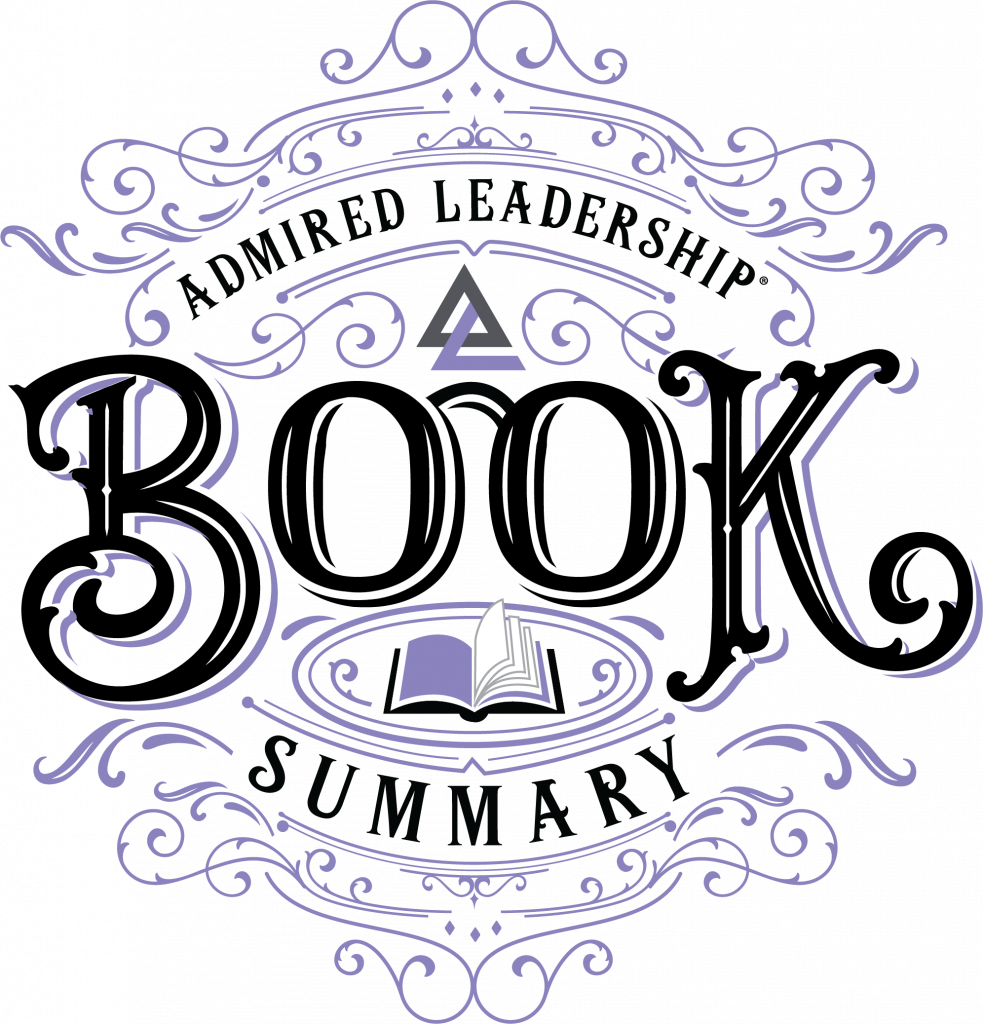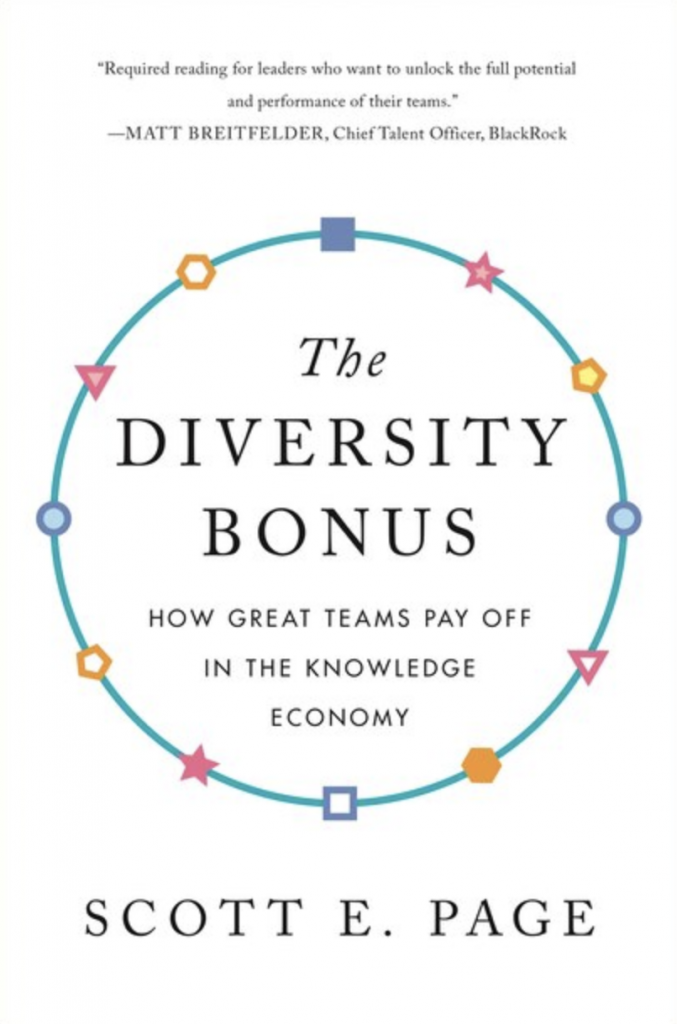Key Quote:
“The key takeaway is that as long as there exist some tasks for which identity diversity can produce bonuses, and clearly there do, the intelligence community needs identity diversity in house. It also needs to build a culture in which identity-diverse teams function well” (p. 201) — Scott Page
Key Points and Concepts
Defining the Diversity Bonus
The diversity bonus is defined as the cognitive diversity of a team measured by the lack of overlap of repertoires (p. 6).
There are six repertoires Page uses to measure diversity bonuses: information, knowledge, heuristics/tools, representations, mental models, and frameworks (p. 64).
Identity and cognitive diversity bolsters knowledge communities and reinforces trust within the group (p. 10).
Adding diversity indiscriminately will lead to low team performance and lead people to believe the organization’s push for diversity is counter to the company mission (p. 14).
Creating Diverse Teams
“Teams win because they can draw from larger cognitive repertoires. A team possesses more information, more ideas, more knowledge, and more ways of thinking than a single person. A team can access more perspectives and more tools. This abundance of cognitive tools allows them to produce more ideas and to find improvements in the ideas they encounter. It allows them to partition reality more finely and avoid blind spots. This abundance depends on the team consisting of individually accomplished individuals who are collectively diverse” (p. 174).
“When diversity bonuses exist, the best group will not, as a rule, consist of the best individual performers according to some criterion. Instead, it will be diverse” (p. 19).
Abraham Lincoln understood the value of diversity when building his cabinet, stating, “The occasion is piled high with difficulty, and we must now rise to occasion. As our case is new, so we must think anew and act anew. We must disenthrall ourselves” (p. 25).
Teams with the same backgrounds, education, and tools equal cognitive diversity gained. “There is Too Much Information (TMI) and Too Much Knowledge (TMK), thus a need for diverse teams” (pp. 28-34).
“A committee that makes decisions can only be more accurate than a member of that committee if that member is sometimes on the losing side of votes. If not, the member could make every decision on her own and be equally accurate” (p. 130).
Six Repertoires to Measure Diversity
Information: Interpretable, meaningful data. No two individuals have the same information, leading to only relevant information or new ideas for productivity (p. 67).
Knowledge: Theoretical, empirical, or practical understanding of patterns, literatures, or domains of inquiry. Knowledge structures information and assumes coherence (p. 68).
Heuristics or Tools: Methods or techniques for generating new ideas. “Three features of heuristics make them a likely source of diversity bonuses. First, any given heuristic fails on a large set of problems. All human problem-solving heuristics have blind spots and biases. Even a sophisticated mathematical heuristic can be misled by a deceptive problem. A second heuristic, even a less effective one, may be misled on a different set of problems. If so, it produces a diversity bonus—not by being better but by being different…Third, heuristics traverse domains” (pp. 69-70).
Representations: Divided into two sections – perspectives, which assigns a unique identifier to each alternative or possibility – and categorization, which are partitioned possibilities in disjointed sets (pp. 70-73).
Models: A systematic, simplified description that shares or captures relevant features of a domain (p. 74).
Frameworks: “The expansion to full repertoires has significant consequences for inclusion as well. Limiting identity’s expected contributions to knowledge-based bonuses has the undesired effect of siloing diverse employees in identity and diversity-related jobs. Thus, we find that minorities disproportionately take positions in charge of marketing to their own identity group, as chief diversity officers, and as professors of American culture. To assign people jobs limited to their own identity groups skates on the edge of exploitation: come tell us about your people so that we may sell them more soap. It also misallocates talent” (p. 204).
Innovation
Innovation is combining creative thinking and problem-solving with a predictive task (p. 121).
“In evaluating innovation, we care less about the number of ideas than about the value of the best one. Thus, experts characterize innovation as consisting of two parts: generating ideas (either by creating or problem solving) and then choosing the best from among them. Innovative teams still believe that more is better—all else equal, having a larger set of ideas to choose from increases the odds of having one really good idea” (p. 121).
Identity Diversity
Iceburg Analogy: “The first framework, the icebergs, distinguishes attributes that compose identity diversity—race, gender, ethnicity, sexual orientation, age, and physical capabilities—by their observability. We see a person’s skin color, gender, and age. We hear her dialect. We see physical qualities. We do not see values, beliefs, religion, history, or ancestry. The traditional identity iceberg analogy categorizes attributes as either above or below the waterline. We observe those attributes above the waterline. We can only infer attributes below the waterline” (p. 148). This can lead to selection bias and make for a less diverse team.
Timber-Framed House Analogy: “Just as two parts of a timber-framed house can be nailed together or lie far apart, so too can pairs of identity attributes. A person’s neighborhood and social class connect more closely than her skin color and diet, while her ancestry probably links more tightly to her religion than to her current social status. The timber-framed house analogy warns against separating out effects of individual identity attributes. A person’s entire identity influences her life experiences and therefore her identity attributes” (p. 151).
“In thinking through the effects of identity on our cognitive repertoires, in places it will be helpful to distinguish between fluid intelligence and crystallized intelligence. Fluid intelligence corresponds to problem-solving skills and logical reasoning. Tests of fluid intelligence ask subjects to match patterns or solve logic puzzles. Tests of crystallized intelligence ask for the definition of cosine. A person with high fluid intelligence can acquire knowledge quickly. If he does not retain it, then he lacks crystallized intelligence” (p. 154).
“Given that within each identity category, people vary in their repertoires, we cannot expect token representatives to speak for an entire group” (p. 159).
Identity Based Opportunity – Bonuses
Patricia Bath: Patricia Bath became the first African American resident in ophthalmology at the New York University Hospital. She also worked at Harlem Hospital and Columbia University Eye Clinic Hospital. Her experience at the latter hospital led her to discover a dispartity in blindness rates in African Americans. The diversity bonus was that she originated health care service improvements because of her identity and cognitive diversity (p. 168).
Robert Johnson: Johnson built an extensive repertoire in television marketing and social science that monitored viewing habits of African Americans. His social identity and his cognitive identity allowed him to create BET, filling a gap in the market (pp. 168-169).
Organizations and Diversity Bonuses
Organizations Identity-diverse groups must overcome stereotype threat and implicit bias, and companies must demonstrate and support how identiy diversity improves outcomes (p. 199).
“The key takeaway is that as long as there exist some tasks for which identity diversity can produce bonuses, and clearly there do, the intelligence community needs identity diversity in house. It also needs to build a culture in which identity-diverse teams function well” (p. 201).
Identity-diverse teams reduce the likelihood of culturally sensitive marketing blunders (p. 201).
When organizations bring in diverse individuals, those individuals must produce; however, in order to do that, they need a supportive, inclusive environment (p. 227).
“Inclusion can take a variety of forms. Here, what I mean by an inclusive culture is one in which people have the ability to apply their full repertoires. A lack of inclusion means that someone feels that she has something to add and does not or cannot” (p. 227).
Page. S. (2019). The Diversity Bonus: How Great Teams Pay Off in the Knowledge Economy. Princeton University Press.

Abraham Lincoln understood the value of diversity when building his cabinet, stating,
“The occasion is piled high with difficulty, and we must now rise to occasion. As our case is new, so we must think anew and act anew. We must disenthrall ourselves.”
The traditional identity iceberg analogy categorizes attributes as either above or below the waterline. We observe those attributes above the waterline. We can only infer attributes below the waterline.” This can lead to selection bias and make for a less
diverse team.
“The key takeaway is that as long as there exist some tasks for which identity diversity can produce bonuses, and clearly there do, the intelligence community needs identity diversity in house. It also needs to build a culture in which identity-diverse teams function well.”
